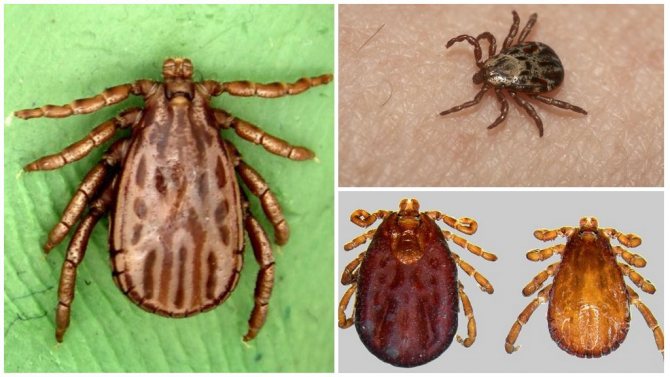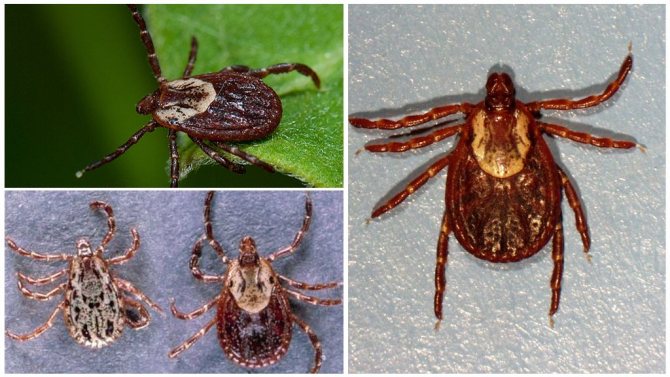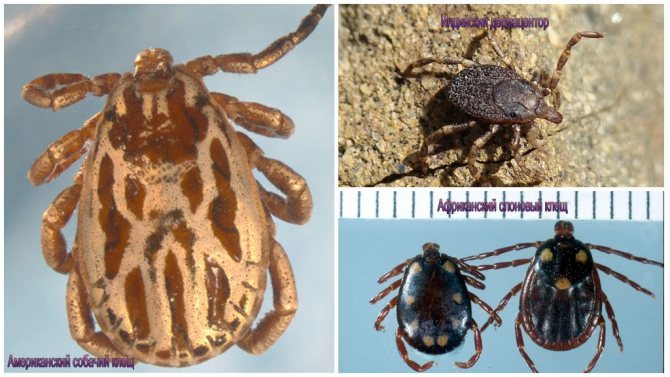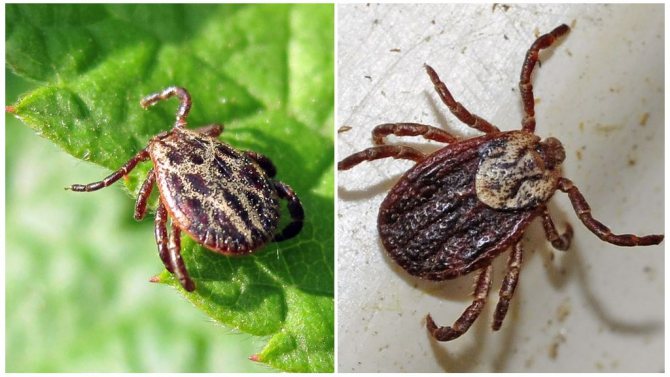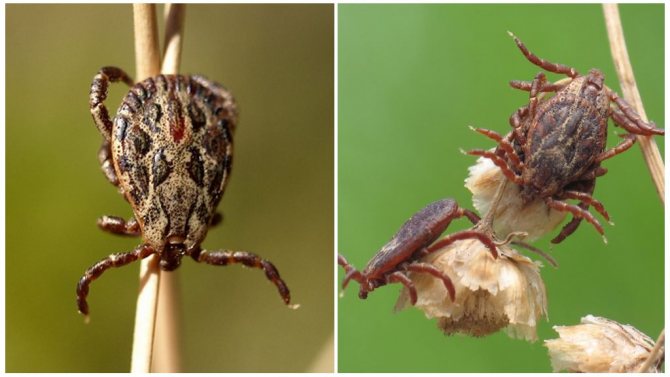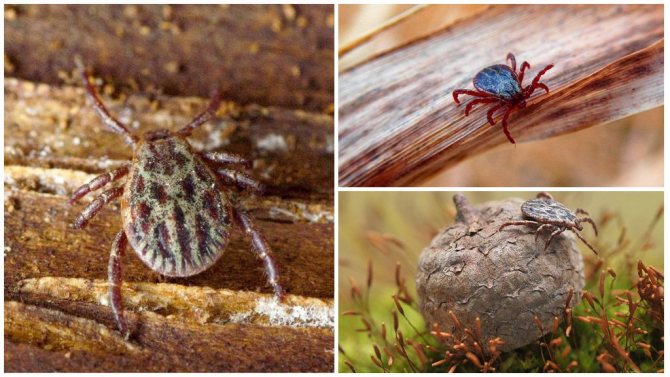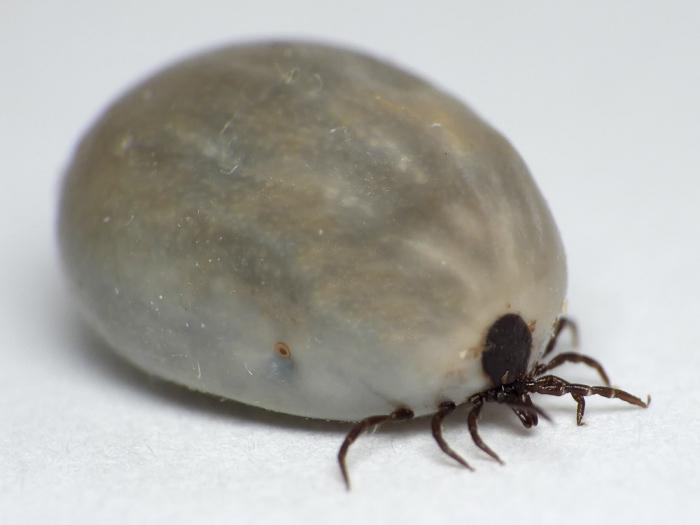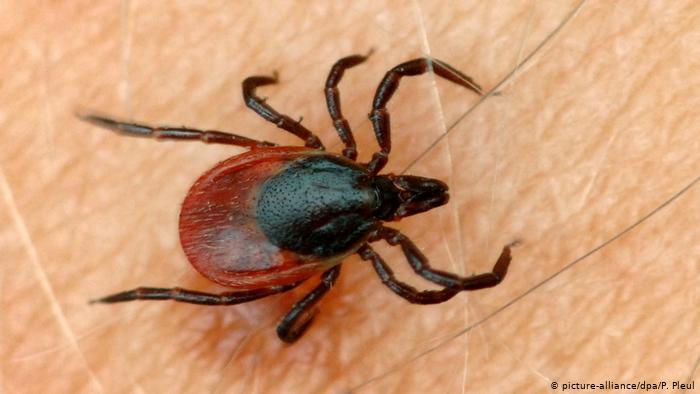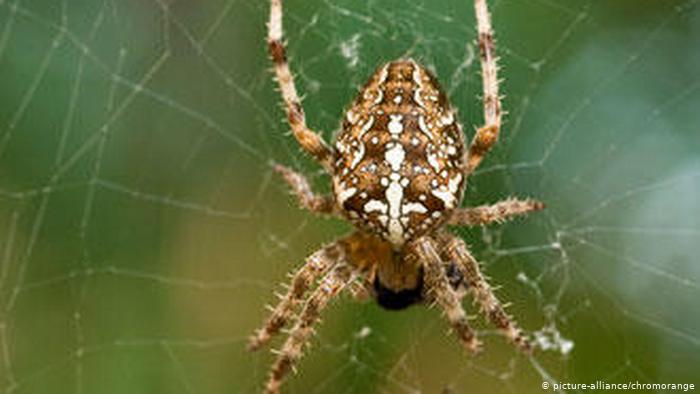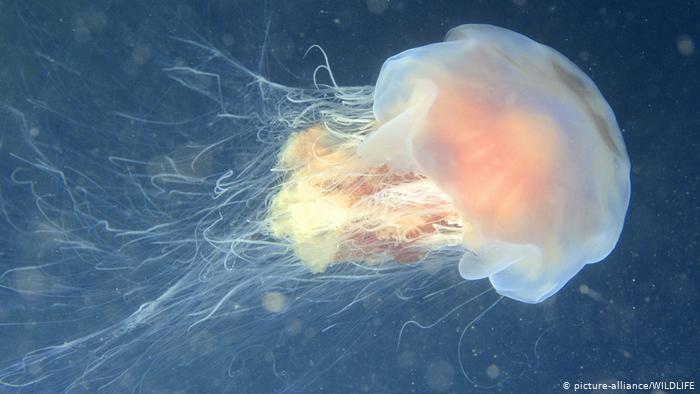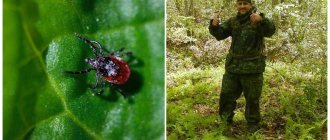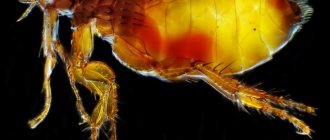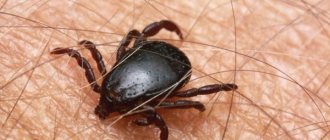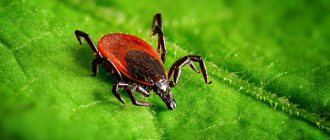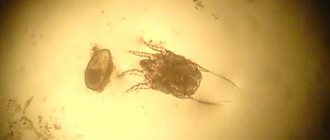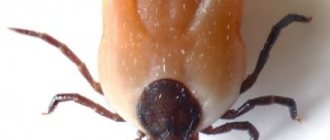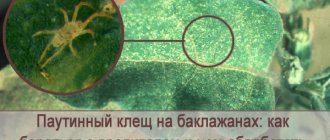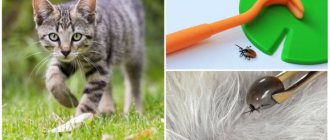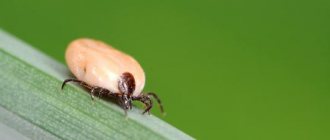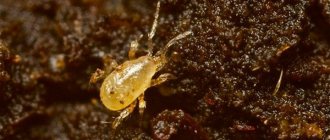Home ›Ticks› About ticks
In the warm season, many parasites are activated, including ticks. One of the worst mites is the dermacentor genus. What types are there, and which ones are dangerous to humans? How to deal with these arthropods? You will learn all this in this article.
It is also useful to read: Tick season
- Dermacentor mites: types and their appearance Winter mite
- Rocky Mountain tree mite
- American canine / arboreal
- African elephant
- Indian Dermacentor
- Meadow tick
- Pasture mite
- Preventive actions
Features of the appearance of a meadow tick
The meadow tick is arranged in a manner typical for all ixodid ticks. Its body consists of a head (gnatosome) and a torso (idiosome). It also has four pairs of walking legs, which is a characteristic feature of arachnids.
All members of the genus Dermacentor have a white pattern on their dorsal plate. The bright spotted color of the tick and the presence of eyes are adaptations for life in open sunny areas.
It is interesting
Vision does not play a key role in the orientation of ticks in space and their search for prey. Many species of ixodids do without it completely or have light-sensitive cells that can only recognize light and shadow.
This photo shows a meadow tick:
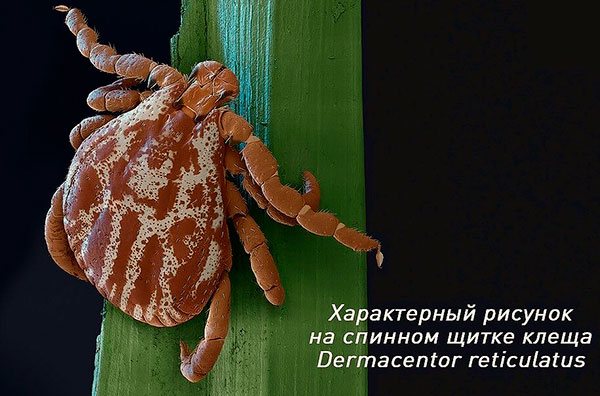
The idiosome of a hungry tick is flattened, but during the feeding of the bloodsucker, it expands and becomes round or oval in cross section. This is due to the elasticity of the cuticle that covers the body of the arachnid. The cuticle forms numerous grooves and folds, which straighten out when the parasite is saturated, due to which its body greatly increases in size. The length of a hungry meadow tick is 4-5 mm, and that of a fed one reaches 1 cm.
On the head of the parasite there is a mouth apparatus. It consists of a proboscis (hypostome), chelicerae and palps. The hypostome has an elongated shape and is covered with hooks and thorns over the entire surface. Chelicerae are designed to cut the victim's skin. At rest, they are in chitinous cases. Palps perform a sensory function. In the folded state of ticks of the genus Dermacentor, they completely cover the proboscis: this design has a bluntly chopped off shape.
Despite the presence of eyes, the parasite receives basic information about the world around it through the organs of touch and smell. The entire body and legs of the arachnid are covered with sensitive sensilla hairs.
The main olfactory organ of mites is called Haller's organ. It is located on the front pair of the parasite's legs. With its help, the bloodsucker perceives the smells emanating from the victim, traps the carbon dioxide exhaled by him and heat radiation.
Cyanea
Hairy cyanea (lat.Cyanea capillata) is a real disaster for the inhabitants of the coastal regions of Germany and vacationers. The slightest touch to the fiery beauty in the water or on the shore responds with burning pain: this is how the poison acts, which are supplied with the stinging cells of the tentacles of the jellyfish. Painful shock can even cause cardiac arrest.


Dangerous animals in Germany
Bloodsucker life cycle
The life cycle of a meadow tick consists of four stages: eggs, larvae, nymphs, and adults. The development of a tick lasts for one year; adults go into winter diapause.
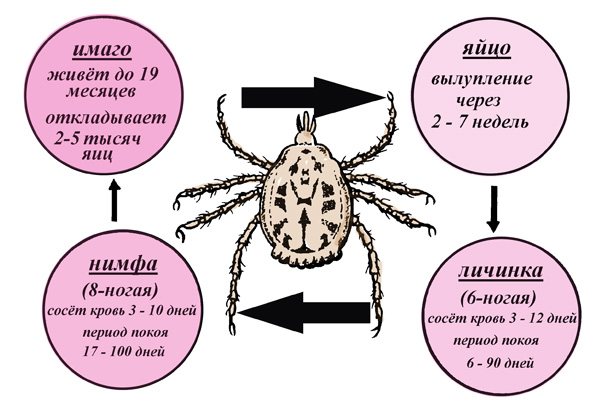

Diagram of the life cycle of a meadow tick.
On a note
Diapause is the inactive life of arachnids. At this time, they stop hunting and feeding, and all their metabolic processes slow down. This condition helps the bloodsucker to survive uncomfortable climatic conditions.
Like most ixodids, the meadow tick is a three-homed mite, that is, at each active stage of its development, it hunts a new prey, after which it molts and transforms into the next stage. And at the stage of imago, after saturation, the female forms a clutch of eggs.
Normal saturation is possible only in inseminated females. Unfertilized females can remain on the host's body for up to a month, but do not reach a state of satiety. Mating occurs either in hungry individuals in the natural environment, or directly during the feeding of the female.
A feeding unfertilized female secretes volatile pheromones with special glands, which begin to work after a few days of feeding. Males catch the smell of these secretions with Haller's organs and, having detached themselves, crawl towards the female. Non-inseminated females die undernourished on the host's body or after it has been abandoned.
It is also useful to read: Why tick bites are dangerous to humans
The fertilized female lays eggs 1-25 days after the end of feeding, the larvae hatch on the 44-80th day. The timing of egg formation and offspring depends on the ambient temperature. For several days after hatching, the larvae are inactive and do not react to the approach of potential prey.
The larvae and nymphs of the meadow tick feed mainly on small rodents - mice and voles; therefore, the number of the parasite population is closely related to the number of these rodents.
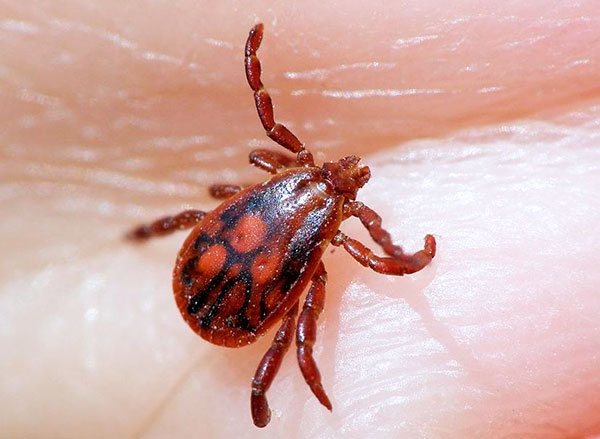

Meadow tick nymph.
The main prey of adults is ungulates. The bloodsucker lies in wait for them in meadows and pastures, but it can also attack a person, although he is not the main host of this arachnid.
It is interesting
Ixodids are good at adapting to environmental conditions. Their attachment to host animals is not rigid, and the choice of the main victims is related to the habitat and what animals are most often found there. Therefore, the same species of ticks can successfully attack ungulates, predators, and humans.
An adult meadow mite is able to live hungry for more than two years. In temperate climates, adults of the genus Dermacentor have the longest life span among all ixodids.
Control measures
Preventive actions
Ticks are extremely unpleasant creatures, so it is better not to be treated for the diseases they carry, and not to allow infection. To do this, you need to follow some rules:
- It is necessary to clean areas, structures, natural strips and other places from shrubs and dead wood by burning.
- Before going into a place inhabited by ticks, treat clothes and exposed parts of the body with special sprays, and there should be as few open parts as possible.
- Examine the body regularly for ticks and when found - remove them immediately.
- Vaccinate yourself and your animals with preventive vaccinations if you live or plan to travel to an area that is densely populated with ticks.
Extermination activities
Indoors and tents, use insecticidal and repellent preparations in the form of dusts and aerosols - they do well with ticks without harm to humans and animals.
An effective measure for the elimination of ticks on farm animals is acaricidal treatment... Use chemical acaricides approved for this purpose in veterinary medicine.
If you are nevertheless bitten by a tick, then first carefully remove the parasite (you can use sunflower oil for better gliding), put it in a box or jar and take it for examination to find out if it could infect you with something or not.
Important! Make sure there are no tick particles left inside you.
It is also useful to read: What are the ICD-10 diagnosis codes assigned to a tick bite?
As it turned out, not all ticks are dangerous to humans. But you shouldn't relax. Follow all the necessary control measures, and then you will never become a victim of these little parasites.
The timing of the activity of the parasite
The mites of the genus Dermacentor are very cold hardy. They wake up when the first thawed patches appear. The peak of their activity occurs in April-May: hungry and aggressive adults attack large and medium-sized mammals. By the beginning of summer, the activity of parasites disappears, their summer diapause lasts until August.
In the fall, a second, less intense peak of tick activity is observed. Their vital activity ends completely when it snows.
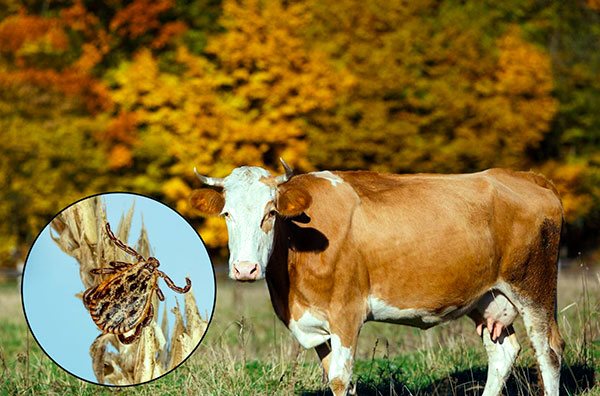

In autumn, the second active phase of meadow mites begins, although it is less pronounced than in spring.
The meadow tick is able to survive the winter only at the imago stage. Hungry adults go into diapause, and females can be either hungry or well-fed, and males can only be hungry. Nymphs and larvae that do not have time to molt die, regardless of whether they are hungry or fed.
Females that are fed after mid-summer enter reproductive diapause. She prevents them from laying eggs until spring. This process prevents the death of eggs and hatched larvae during the winter cold.
The mechanism of reproductive diapause in female meadow ticks is regulated by the length of daylight hours. This phenomenon is called a photoperiodic reaction. The arachnid reacts to the ratio of the duration of night and day, and when the daylight hours becomes shorter than a certain period (this value depends on the region), the diapause mechanism is triggered in its body.
Summing up
As you can see, the ixodid tick can bring huge problems to a person. Much depends on the person himself, how much he prepares for a walk in nature and protects himself. If it so happened that a bite occurred, you should not hope that everything will pass without consequences. Although in fact the probability is not very high that you will be attacked by an infected tick, it is still present. He goes to medical institutions, carry out tests and studies on time to prevent complications and irreparable consequences.
Features of trapping and attacking the victim
Finding a host is a very important stage in the life of ticks. They use their prey to maximize satiety, increasing their mass by a hundredfold due to the blood they drink.
Blood-sucking arachnids passively lie in wait for their victims. To do this, the parasite needs to find a place suitable for the following parameters:
- Optimum temperature;
- Sufficient humidity;
- Loot availability.
The meadow mite prefers moist grassy fields and bushes. The parasite is located on the grass at a height of several centimeters to a meter. Most often, it is climbed onto dried cereal straws.
The tick settles on a blade of grass with its forelimbs extended forward. When he feels the approach of a person or an animal, he begins to make oscillatory movements with his paws in order to better perceive the smell. In this case, the parasite turns towards the prey, waiting for physical contact in order to crawl onto it.
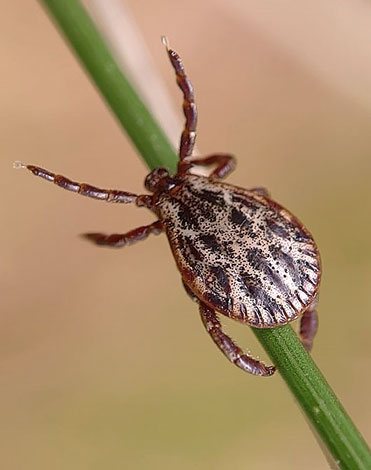

The meadow mite is ready to attack.
On a note
Contact with the victim is important for the tick; it cannot jump or fall on it.
If the victim does not approach, but its presence nearby (up to 10 meters) continues to be felt, the parasite can descend from its post and crawl to it. The speed of movement of the meadow mite on a horizontal surface is about 40 cm per minute.
It is also useful to read: Are mites found in a pine forest (and in coniferous forests in general)
Once on the host, the parasite moves through its body for some time in search of a place to attach. The tick prefers to suck where it will be more difficult for the victim to reach the bloodsucker, and for him himself it will be easier to cut through the skin and get to the blood vessels.
Ungulates become the hosts of the meadow tick in most cases. It is most often attached to their head or neck. Other popular attachment sites for the parasite include the groin, armpits, ears, and the area behind them. A feature of this type of tick is that the parasite, before starting to suck blood, makes several test punctures of the skin.
The spider cuts the skin with chelicerae, immersing them deeper and deeper into the wound. At the same time, a hypostate is introduced into the hole, and the palps are bent to the sides.
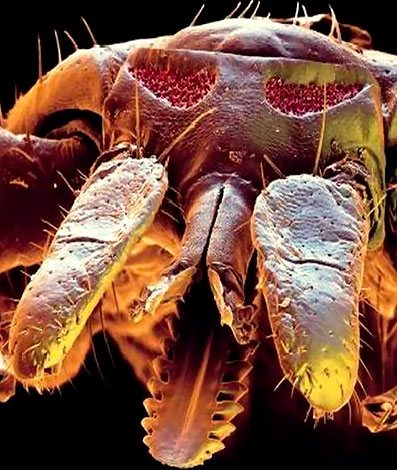

Mite mouth apparatus under a microscope.
From the very beginning of the immersion of the mouth apparatus into the victim's skin, the parasite begins to actively secrete saliva. It has an analgesic effect and suppresses the host's immune response, so the bite passes unnoticed. In addition, after a while, the saliva hardens, forming a strong cement sheath around the hypostome.
Ticks of the genus Dermacentor are characterized by a short proboscis, most of which remains above the host's skin, while the parasite is firmly attached to the bite by a case of frozen saliva. Its base is much wider than the incision of the wound due to incrustations in the victim's skin tissues.
An hour is enough for an adult male tick to saturate, while a female can eat for 9-15 days. In this case, the mass of the parasite increases 50-100 times. The feeding process is uneven. During the first 6-36 hours after the start of feeding, the mass of the tick does not change - the arachnid simply makes up for the loss of water. On the 2nd-7th day of nutrition, its weight increases by 10-20 times. Its greatest growth occurs at the third stage - a day before falling away.
When the female has disappeared, she needs to find a secluded and humid place to form a clutch of eggs, the number of which ranges from 3 to 6 thousand. After that, she dies.
Catfish
European catfish (Silurus Glanis) feels great in Germany. Some individuals reach 150-190 cm in length. Such a catfish may well bite, especially if the bather accidentally steps on the nest or is near it. In small pits in shallow water, before spawning, females equip nests, which males then guard. A catfish bite is not hazardous to health.
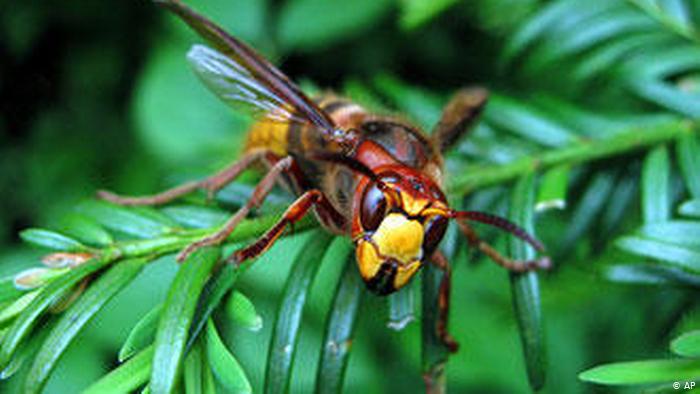

Dangerous animals in Germany
Why is the meadow tick dangerous?
Dermacentor reticulatus bites are dangerous to humans. The saliva of the parasite may contain various pathogenic viruses and bacteria. This type of tick carries pathogens of tick-borne encephalitis, tularemia, Omsk hemorrhagic fever, Q-fever, typhus, babesiosis.
The parasite can become infected through the ingested blood of its victims, sexually and transovarially, when the pathogen is transmitted through eggs from the female to the offspring.
Tick-borne viral encephalitis is the most dangerous disease transmitted by bloodsuckers. This disease affects the human brain and nervous system, causing severe consequences, and can lead to death. In most cases, people who have recovered become disabled. There is no cure for this disease, there is only supportive therapy.
Tularemia is caused by bacteria and manifests itself in the form of fever, severe headache, inflammation of the lymph nodes, diarrhea, and sleep disturbances. Treatment is carried out with antibiotics in a hospital. In nature, the sources of this infection are lagomorphs and rodents.
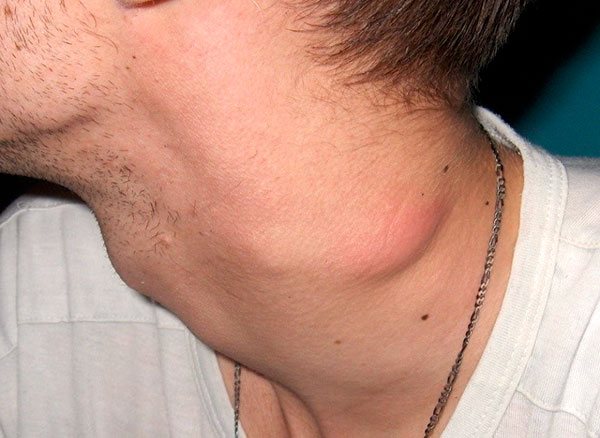

Ticks can transmit tularemia. One of the symptoms of the disease is an increase in lymph nodes to the size of a walnut.
Omsk hemorrhagic fever is a viral disease.Its symptoms are a sharp rise in temperature, muscle and headache, nausea and dizziness, the appearance of a hemorrhagic rash, bronchitis. Natural carriers of the virus are the bank vole, muskrat, water rat.
Q fever (Q fever) is accompanied by high fever, headache, muscle pain, and a feeling of fatigue. It is treated with antibiotics in a hospital. Sources of infection are horses, pigs, poultry, small and large horned livestock, rodents, and wild ungulates. In addition to being bitten by a tick, a person can contract this fever through contact with an infected animal or by eating meat from it. The causative agent of the disease is rickettsia.
Tick-borne typhus is also caused by rickettsia. Its symptoms are: rash, pain in the head and muscles, high temperature. It is treated with antibiotics.
Babesiosis, or piroplasmosis, is caused by protozoa - babesias. This disease usually affects animals. Their temperature rises, the work of the cardiovascular and digestive systems is disrupted. In the acute form of the disease, mortality in cattle is 40%, in sheep and goats - up to 80%.
Babesiosis can affect people with reduced immunity, for example, people with HIV, the elderly, and recently undergoing major surgery or illness. In a healthy person, this disease is asymptomatic.
Medical value
The pasture mite is dangerous due to the spread of various diseases.
- Lyme disease or borreliosis;
- tick-borne encephalitis;
- tularemia;
- ehrlichiosis;
- babesiosis;
- fever;
- relapsing fever;
- helminthic invasion.
Important!
The most dangerous are infections of borreliosis, tick-borne encephalitis. Infection occurs during the bite of an infected pasture tick. The incubation period lasts an average of 14 days. The first symptoms are similar to those of the flu. It begins acutely with fever, headache, muscle aches, photophobia, etc.
The acute phase of borreliosis, tick-borne encephalitis lasts about 10 days. After that, either the disease recedes, immunity is developed, or continues to progress. The next exacerbation occurs within a month, the manifestations are stronger, longer lasting. In the absence of qualified therapy, paralysis, paresis, disability, dementia, impaired vision, hearing, and death occur. Tick-borne infections affect the brain, central nervous system, muscles.
Other ticks of the genus Dermacentor
Representatives of the genus Dermacentor are common in Eurasia and America. Most of them (15 species) live in the Palaearctic region, which covers Europe, part of Asia north of the Himalayas without the Arabian Peninsula and northern Africa to the border with the Sahara Desert. 11 species live in North and Central America, 4 species live in tropical Asia and 2 - in Africa, sub-Sahara. Almost all of them are carriers of causative agents of dangerous diseases of animals and humans.
The pasture mite (Dermacentor marginatus) is in many ways similar to the meadow mite, its larvae and nymphs also do not survive the winter. It lives in the south of the European part of Russia, in Western Siberia, Kazakhstan and in the zones of mountainous and lowland steppes of Central Asia.
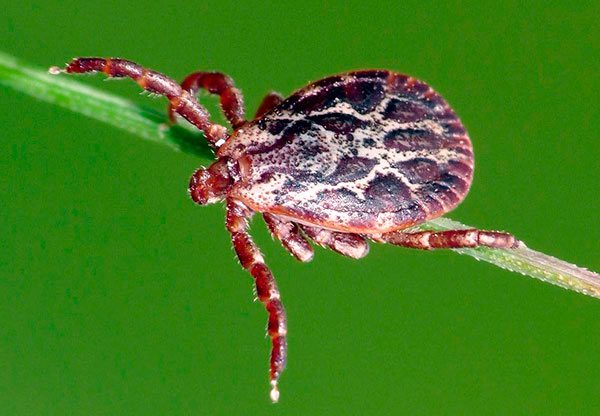

The pasture mite is very similar to the meadow mite.
In the steppes of Siberia, Dermacentor nuttali is found, which differs from other representatives of this genus in that a person can be attacked not only by his imago, but also by nymphs. Dermacentor silvarum is found in the forest-steppes of the Far East and Eastern Siberia.
The American dog tick (Dermacentor variabilis) lives in the USA and Canada. He settles in deciduous forests, shrub woodlands and meadows. Dermacentor auratus lives in the rainforests of India and Southeast Asia; adults of this species feed on wild pigs.
The meadow mite is very resistant to unfavorable natural conditions - frost, flooding - and has a high reproduction rate. Every year more and more populations of this species appear in Europe, and this carries a great epidemiological danger.
An interesting video about the peak activity of meadow ticks
Precautions
As the main preventive measures, it is recommended to wear outdoor clothing that completely covers open areas of the body. In addition, after staying in the forest or in the field, be sure to carry out preventive examinations, as a result of which the detected tick on the body is carefully removed along with the proboscis. Try not to damage its integrity. In the event that it is disturbed during the extraction process, a viral infection can enter the body. It must be remembered that if a pasture tick infects farm animals, then with their milk, which has not undergone special treatment, the infection can be transmitted to humans.
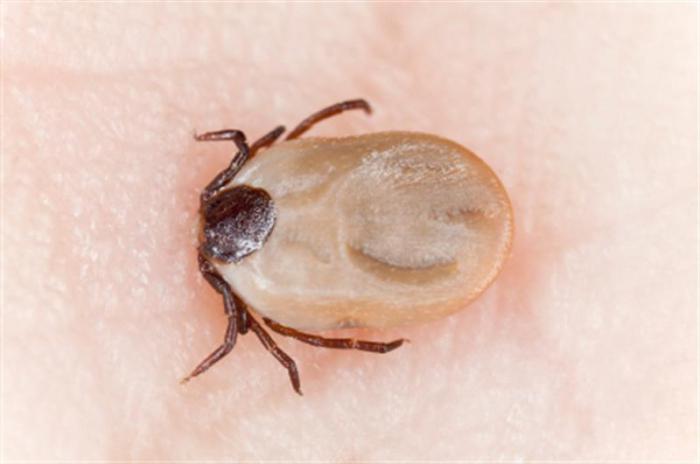

At the same time, be sure to keep in mind that even if you are sure that the pasture tick was removed without violating its integrity, be sure to undergo a preventive medical examination, which will help to timely detect and begin treatment of a possible viral infection.
Habitat
Meadow tick is an inhabitant of deciduous and mixed forests of Siberia and Europe. Since this species is very similar morphologically to the pasture mite, they are confused. Sometimes, summarizing, both types are called grass mites. This name is more suitable for pasture, which prefers to live in dry steppe biotopes with herbaceous vegetation.
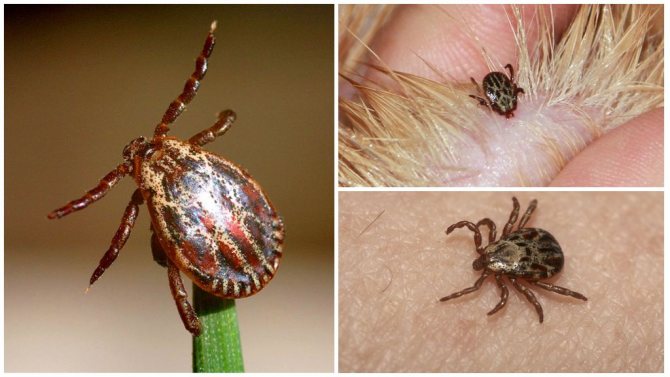

Meadow tick
Lugovoi has one of the additional names: marsh. This name clearly indicates the preferred habitat of the parasite:
- flooded meadows;
- the edge of a deciduous forest;
- forest glades.
The meadow mite also lives in pastures. It can withstand spring floods. In places of cattle grazing, mass reproduction of the dermacentor of the reticulatus is observed.
Wasp, hornet, bee ...
If you have allergies, the bite of nectar hunters can be fatal. But those who, for example, disturb the nest of wasps or hornets, will not be good. It's all about the number of bites, which means the dose of the poison received. Pictured: common hornet (Latin Vespa crabro). Despite its impressive size (up to 35 mm), the hornet is considered less aggressive than the wasp.


Dangerous animals in Germany
Tolerable diseases
Dermacents belong to the same family as the ixodid taiga and European dog ticks. The ranges of these bloodsuckers overlap each other. Their food type is also similar. Arthropods during their life parasitize on several hosts. Therefore, both types of dermatcentors carry the same diseases as ixodic ones. Both meadow and pasture can infect:
- rickettsiosis;
- piroplasmosis;
- tick-borne encephalitis;
- babesiosis;
- Astrakhan spotted fever;
- Q fever (aka Rocky Mountain spotted fever).
In addition to infections, meadow and pasture ticks are capable of transmitting protozoan parasites.

